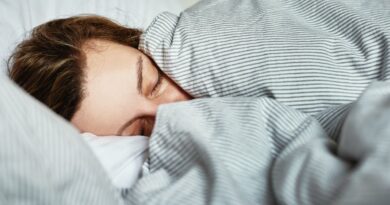Red before bed: The sleep hack you need to know, according to a mom neuroscientist
You’ve read the books, perfected your bedtime routine, and can swaddle like a pro—but your baby still won’t sleep. It doesn’t matter if you’re a seasoned parent with years of experience or a first-time mama with a fussy newborn; when you’re exhausted, sleep becomes something you’ll do almost anything to achieve.
We’ve been there, too, so we’re constantly on the lookout for sleep hacks that make life a bit easier—and red light has entered the chat. Red light is a simple, science-based solution that can promote healthy sleep habits for your baby.
Here’s what to know about why red light is so helpful and why it may be the missing link to better sleep for your whole family.
It all started with a mama neuroscientist’s lightbulb moment
When science meets motherhood, amazing things can happen. Dr. Sofia Axelrod, a mama, neuroscientist, and author of “How Babies Sleep,” was inspired after diving deep into the Nobel prize-winning research on the body’s circadian rhythms and sleep. She realized the best way to create the ideal environment for restful sleep was to work with the body instead of against it. “We all have the capacity to sleep better thanks to a powerful biological tool: the circadian clock.”
Your circadian rhythm is the internal clock that dictates sleep and wake cycles. We all have one—baby too, albeit underdeveloped—and it’s influenced by light exposure. In a perfect world, our primary light exposure would be from the sun, but with the amount of time spent inside combined with artificial lighting, our internal clocks are easily thrown off.
Red is the new black for your nursery
Dr. Axelrod co-created the Sunset Baby Soother, a nightlight that uses red light to naturally soothe your baby to sleep with all of the above in mind. Here’s how it works: Blue light, the type emitted from electronics like phones, tablets, as well as regular lightbulbs (and the sun), increases the production of cortisol to help you wake up and stay alert during the day. It also suppresses melatonin, a hormone that makes you sleepy. Blue light exposure becomes a problem at night because it can disrupt these natural hormone rhythms.
Red light does the opposite by supporting the natural production of melatonin so you and your baby feel sleepy and ready for bed. That gorgeous sunset that signals the end of the day? That’s primarily red light! In other words, red light is mother nature’s way of tucking us in for the night. Unlike many baby monitors or nursery nightlights, The Sunset Baby Soother uses DreamRed technology to gently guide your baby to sleep with a soft red glow.
technology to gently guide your baby to sleep with a soft red glow.
Red light is only one of the reasons we love the Sunset Baby Soother
The red light is the primary selling point for the Sunset Baby Soother, but there are even more features to love. The soothing red light can stay on all night, perfect for middle-of-the-night feedings or 2 a.m. diaper changes when the last thing you want to do is turn on a bright overhead light. You can also set the nightlight to gradually fade away like a sunset after 30 minutes, a big plus if you have toddlers who take time to wind down.
The white noise machine is an added plus to help create the just-right sleep atmosphere for your little one. And the portable device includes an adapter plug and USB cord, making it easy to take the soother anywhere you go.
It’s the perfect tool for helping your little one develop healthy sleep habits and get a good night’s rest. You may find the soothing red light so relaxing you’ll want one in your room too.
References
Tähkämö L, Partonen T, Pesonen AK. Systematic review of light exposure impact on human circadian rhythm. Chronobiology international. 2019 Feb 1;36(2):151-70.
Zhao J, Tian Y, Nie J, Xu J, Liu D. Red light and the sleep quality and endurance performance of Chinese female basketball players. Journal of athletic training. 2012;47(6):673-8.




